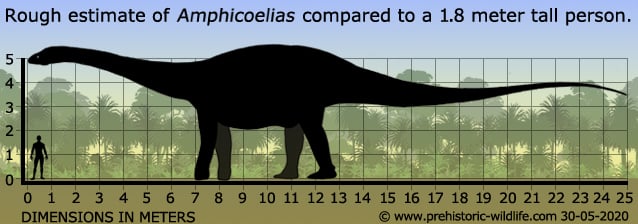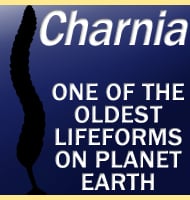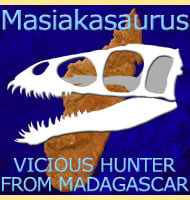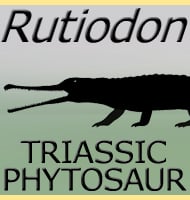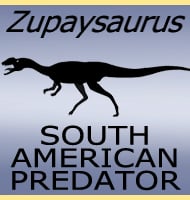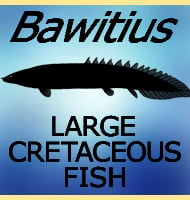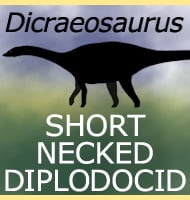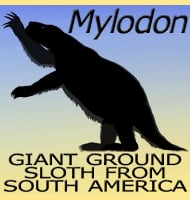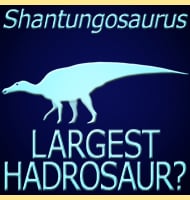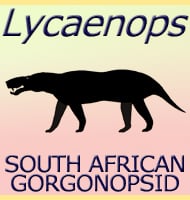In Depth
For one hundred and forty years Amphicoelias was regarded by some to have been one of the largest dinosaurs to ever walk the earth. First named in 1878 by Edward Drinker Cope, and based upon some truly large fossils of vertebrae and partial limbs and pubis bones. Three species were named, A. altus, A. fragillimus and A. latus. When the largest fossils belonging to A. fragillimus compared to fossils of the dinosaur Diplodocus and scaled up to match the size of the new vertebrae, Amphicoelias was regarded to being at least forty to maybe even sixty meters long. Then a bizarre thing happened, the large fossils of Amphicoelias disappeared.
For the remainder of the nineteenth and throughout the twentieth century, Amphicoelias was spoken about as an almost mythical dinosaur genus. The only evidence that these fossils existed were the drawings included with the original description, and not from multiple sides and angles as they usually would have been rendered. It is also worth remembering that this happened during the Bone Wars, the great paleontological rivalry between Edward Drinker Cope and Othniel Charles Marsh as they raced against one another to catalogue as many fossils as possible. It could be that the missing fossils are somewhere in a museum storage facility, forgotten about for over a century.
Throughout the twentieth century the scientific community steadily learned much more about dinosaurs, and Amphicoelias existed as a dubious genus, very difficult to fact check against. In 1921 one species, A. latus which was based upon the description of tail vertebrae and a femur (thigh bone) was actually found to actually be from the dinosaur Camarasaurus. This left Amphicoelias with the type species A. altus and the other species A. fragillimus. Several times it has been suggested that these two species were one and the same, just the fossils of A. fragillimus were of a larger individual. Most of the previous forty to sixty meter length estimates were because of the A. fragillimus fossils.
Some researchers however began to note that the drawing of the fossil vertebra of A. fragillimus was actually less like a diplodocid sauropod, but more like a rebbachisaurid sauropod. The rebbachisaurid sauropods are usually treated as a sub group of diplodocids, related to them but morphologically different. No one knew about rebbachisaurid sauropods when Amphicoelias was named, it was only in the latter half of the twentieth century that they began to be discovered. In 2018 Kenneth Carpenter formalised the assessment, and moved A. fragillimus into its own genus, as the rebbachisaurid sauropod Maraapunisaurus fragillimus. Comparing the known material of Maraapunisaurus fragillimus to more complete rebbachisaurid sauropod genera such as Limaysaurus and adjusting for size has led to estimates of a little over thirty meters long, not forty to sixty for Maraapunisaurus fragillimus.
This leaves A. altus as the only valid species, one that is definitively a diplodocid sauropod dinosaur. Comparing what we know about the size of the original fossils of A. altus, we know that the individual dinosaur that left these fossils was probably around twenty-five meters long. This means that while Amphicoelias was a big dinosaur, it was certainly within the known size scope of the diplodocid sauropod dinosaurs. Because of the lack of surviving fossil material we still don’t know much about the Amphicoelias genus. But as a diplodocid sauropod dinosaur we can infer that it would have been a large twenty-five long herbivore, using its long neck to either reach food growing up in trees or sweeping over wide expanses of low growing plants. Many other types of sauropod dinosaurs shared its environment as well as smaller ornithopod dinosaurs and also stegosaurs too. Some large predators such as Allosaurus would have also been present.
Further Reading
- On the Vertebrata of the Dakota Epoch of Colorado, Edward Drinker Cope - 1878a. - Camarasaurus, Amphicoelias and other sauropods of Cope, H. F. Osborn & C. C. Mook - 1921. - New remains of Amphicoelias Cope (Dinosauria: Sauropoda) from the Upper Jurassic of Montana and diplodocoid phylogeny, J. A. Wilson & M. Smith - 1996. - Biggest of the big: a critical re-evaluation of the mega-sauropod Amphicoelias fragillimus.” In Foster, J.R. and Lucas, S.G., eds, K. Carpenter - 2006. - A new basal diplodocid species, Amphicoelias brontodiplodocus, from the Morrison Formation, Big Horn Basin, Wyoming, with taxonomic reevaluation of Diplodocus, Apatosaurus, and other genera, H. Galiano & R. Albersdorfer - 2010. – Maraapunisaurus fragillimus, N.G. (formerly Amphicoelias fragillimus), a basal Rebbachisaurid from the Morrison Formation (Upper Jurassic) of Colorado. – Geology of the Intermountain West. 5: 227–244. – K. Carpenter – 2018.
